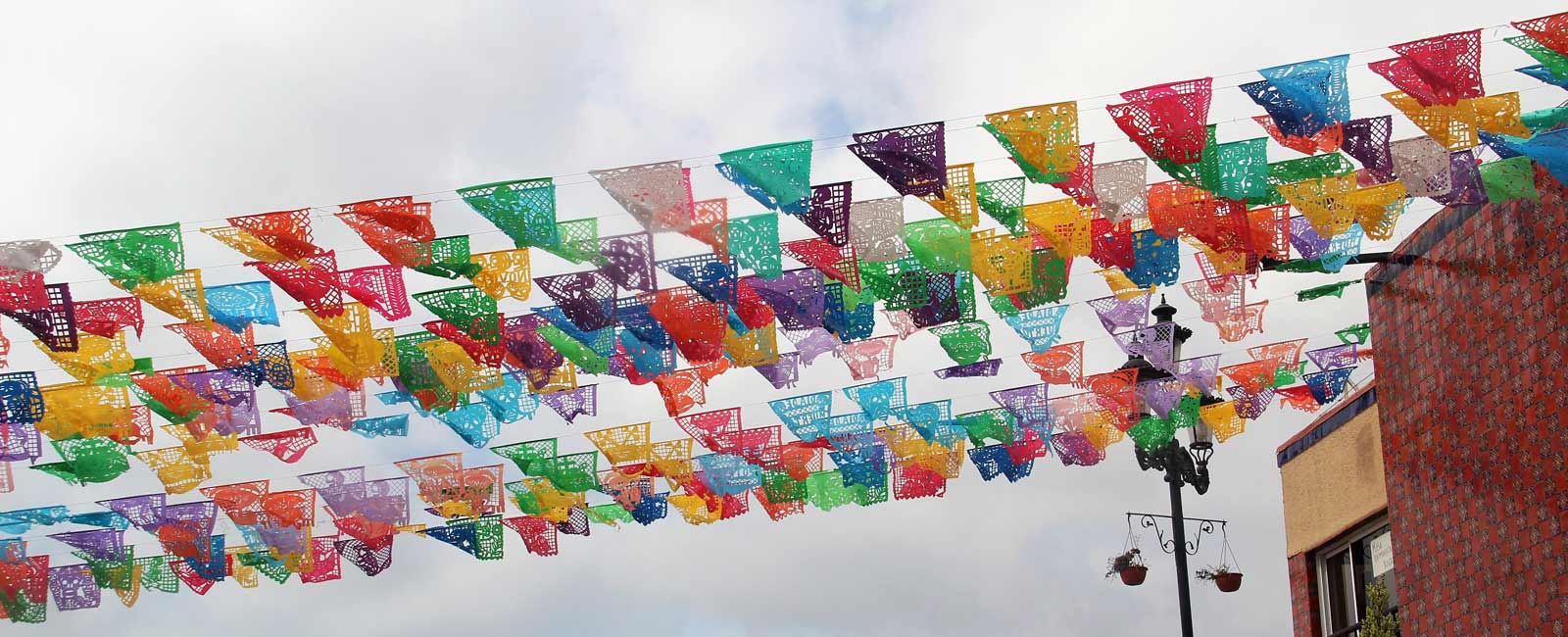
Francis Parker Exploring South East Asia
Wednesday, Feb. 18th: A Glimpse of the Past and a Glimpse of the Future
Standing at the center of every country, there seems to lie a defining moment in the state’s history that, more often than not, stands as a point of pride. In the United States, people are proud of the signing of the Declaration of Independence and the Revolutionary War that ensued, serving as a reminder of the freedom that stands at the center of the country. April 17, 1975, was meant to be that moment for Cambodia, which would known as Democratic Kampuchea. As the Khmer Rouge regime paraded through the streets, some Cambodians cheered at the thought of a new country centered around the ideal of total equality. However, April 1975 and the four-year time period that followed now seems to cloud both the citizens’ minds and foreign perceptions of the country’s history and people.
With this in mind, we headed to the Choeung Ek Genocidal Center. Immediately after we arrived, we were surprised by the serenity of the center. Standing as one of over 300 “killing fields” around Cambodia, Choeung Ek served as the final destination for those tortured at Tuol Sleng Prison, which we had seen the day before. Ultimately, the killing fields combined to slaughter over 2 million people, or 35% of the Cambodian population. Guided by an audio tour, we walked independently through the compound, noting the stark contrast between the natural serenity of the compound and the atrocities committed over 40 years ago; however, the calmness was disturbed by horrifying stories and statistics. Around the grounds were areas demarcated by bamboo sticks, indicating graves that once held the remains of thousands of victims of the genocide, including women and children.
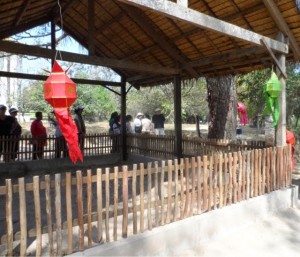
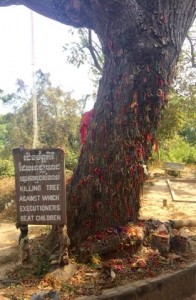
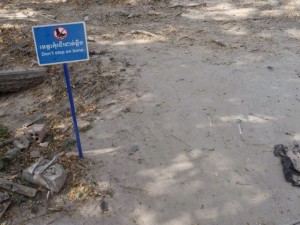
Accompanying the guided tour were stories of real survivors, recounting incidents of rape, the loss of family members, and the arduous process of healing. We heard all these stories and more as we walked around a lake. The lake is known to hold many more remains, but has been left untouched in reverence to those who lost their lives there, in hopes that they may find peace.
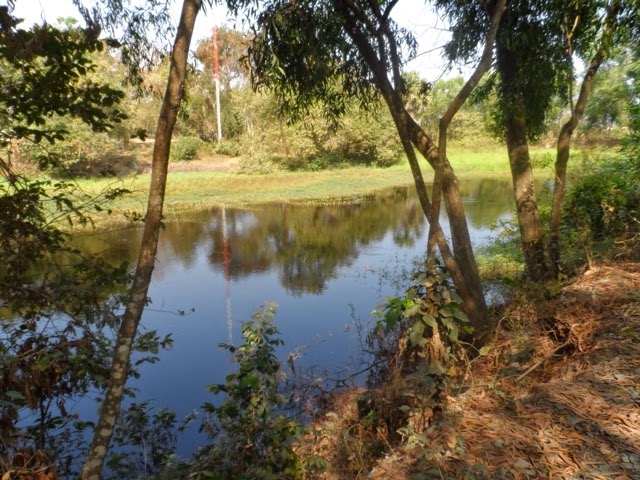
The tour concluded with a memorial stupa, constructed to display some of the 9,000 who lost their lives at Choeung Ek. With its small square footage, most of which was taken up by the large case of skulls at its center, we were forced to edge around its interior, only inches from the glass container.
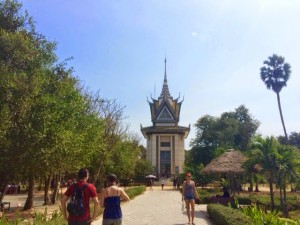

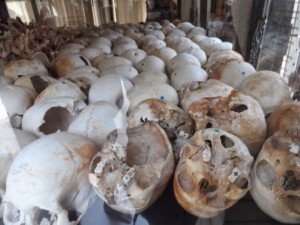
Shaken by the haunting memorial, the tour was appropriately concluded with a rendition of “Oh, Phnom Penh,” which offered a hopeful outlook on the future of Cambodia, a glimpse of which we saw at our next destination.
In contrast to the killing fields, the Seametrey Children’s Village offered a more promising depiction of Cambodia. This primary school seemed like a half-built paradise. We encountered flourishing foliage, red flowers, palm trees, and even an Indochinese rat snake. The soon-to-be-campus very much reflected the school’s mission. Contrary to most schools, the focus was not only to educate its students, but also to help its students find serenity and happiness. As we walked into the school we were immediately welcomed by the main teacher and director of the school, Muoy You, who is also the host of the guesthouse where we are staying. She led us upstairs into a room with a projector. Children, arriving one-by-one on bicycles, saw us going up the stairs and immediately ran to meet us. With smiles on all of our faces, the children encouraged the teacher to take a little break from the schedule and show us their version of The Wizard of Oz.
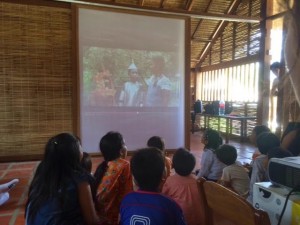
The footage seemed to be of professional quality, with an elaborate script, creative cinematography, and fun costume designs. Only two of the kids can afford to pay the $25 per month tuition to go to school, but all the children were treated equally. Muoy then showed us a short introductory film to the school’s mission and how our help was going to benefit the kids of the surrounding community. The plan is simple: Along with the classrooms, the school would build a full-scale recreational zone that could be rented out to the community and generate enough revenue to make the school self-sustaining. Before she could tell us our role as volunteers, Muoy could not help but cry as she spoke about the killing fields. It was then when we realized why the school was built so beautifully. It would serve as a place of joy and comfort for the community. As a place of education and peace, it offered a path to the future for the Cambodians. With education the students could perhaps move on. It offered the hope that maybe the Pol Pot regime would not be the defining moment in their society, but rather that this moment has yet to come.
As we began to understand the larger purpose of this school, Muoy told us our jobs. In a rotation, half of us would work in the gardens, and the other half would would play with school children. The work in the gardens was hard and hot.
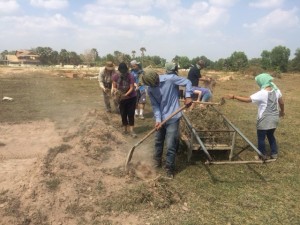
The blazing heat beamed down on us as we dug up grass and placed it in a planter. Just one hour of work sucked the energy out of us. We could not even imagine what it would be like to work a twelve-hour day in this heat. Once we rotated, playing with children was extremely refreshing. The children immediately grabbed our hands and took us to their places of play. After witnessing the horror and incredible amounts of pain, the children’s faces refreshed us with hope and happiness.
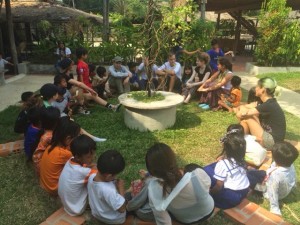
Throughout our travels in Cambodia, we have repeatedly heard references to Pol Pot and the Khmer Rouge. Whether it was the cutting off of the Buddha heads in the temples we visited in Siem Reap or the struggles of the families of our tour guides during the 70s, it is clear that the Khmer Rouge largely deflated a country known for its resilience and cultural heritage. However, through our interactions at the Seametrey Children’s Village and the culmination of our experiences in Cambodia, we have discovered that the atrocities the Khmer Rouge committed less than half a century ago make up a mere page in this country’s history. Over the past week, we have been fortunate enough to meet incredibly gracious people who have shared their pride in their country with open arms. Maybe that is what should define Cambodia: a people full of pride who want to show the rest of the world their homeland.
–Karina Dominguez, Pedro Gallardo, Rex Winn
